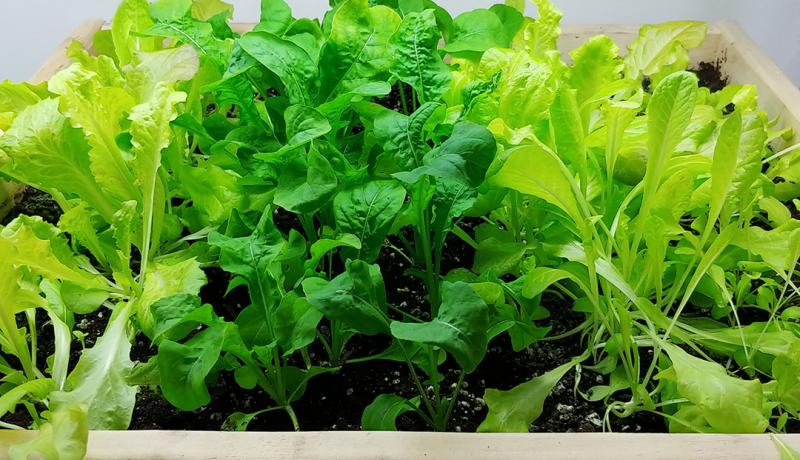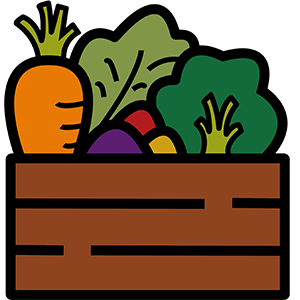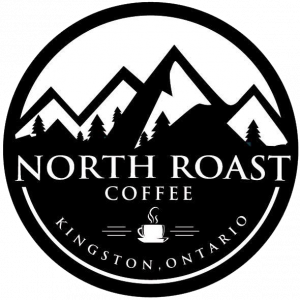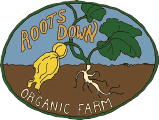
During this trying time, it’s important to stay healthy, safe! We’ve come up with a few ideas for how you can safely stay involved in your local food system while respecting the social distancing and other safety measures in place.
Don’t Assume it’s Closed
A lot of markets, retailers, and food producers are still open for business and have implemented measures to help keep you safe. A few examples are:
- Memorial Centre Farmers’ Market - MCFM has fired up a new online ordering system which allows you to pre-order food from your favourite local producers, and pick it up at a designated time to avoid close contact with others.
- Tara Natural Foods - This brick and mortar grocer is offering call-ahead orders for pick-up, and designated in-store shopping times (9am-2pm Mon-Sat) when they restrict the number of people in the store at once. They’ve also have a great check-out process in place keeping you and their staff safe.
- Edible Earth - This organic market garden is offering call/email-ahead ordering and will deliver right to your doorstep. Edible Earth has an amazing variety, and a deep respect for classic organic growing principles. Contact Sarah by Wednesday for a delivery on Saturday.
Order a CSA
Plenty of producers are still offering Community Supported Agriculture (CSA) programs this year. What’s a CSA? Pay up-front (or in a few installments) for periodic deliveries of fresh harvested produce delivered to your home or a nearby pick-up location. You get a share of whatever the farm produces
Here are some of our favourites (but there are tons of options listed here):
- Roots Down Organic Farm offers a fantastic CSA program starting in June that runs all the way to December
- Main Street Market offers home deliveries by bicycle
- Freedom Farm’s CSA gives you a “store credit” of a higher value than you pay in
- Long Road Ecological Farm offers an option for organic free range eggs, and prepared foods like steamed buns and kimchi
Garden Indoors or Outdoors
Outdoors
Start a garden outdoors - it doesn’t have to be big, and can be done for no more than the cost of a packet of seeds (or less if you source those for free!). A shovel and trowel, and a way to water is really all that’s necessary, and even those items can be improvised or done without. If your soil is lacking in richness/fertility, see the Composting section below. Unfortunately our local community gardens are currently suspended due to coronavirus, so this option only works if you have your own outdoor space.
Here’s a great video on how to start an outdoor vegetable garden: https://www.youtube.com/watch?v=B0DrWAUsNSc
If you do not have a yard, you can also plant in containers. This can be done on a patio, porch, or even on a balcony! Try growing herbs, lettuce, or cherry tomatoes as these grow well in containers.
You could also consider incorporating plant species that encourage pollinators like bees and birds to visit your garden which is of great help to the food system! Here's a video on how to start a pollinator garden: https://www.youtube.com/watch?v=k6NXOz2ExZo
Indoors
Don’t have any outdoor space? No problem! Source some seeds and soil, and improvise some indoor growing containers. You may be able to do without a dedicated grow light if you have a bright south or west facing window for things like salad greens, or you can order something like a Sunblaster T5 HO grow light. You’ll find some great tutorials online - it’s not as hard to get growing as you might think!
See this resource for growing vegetables indoors: https://www.youtube.com/watch?v=pPR2Gq18RPo
Keep in mind that these videos are more comprehensive guide, but you can make it simpler than that!
Here’s where you can source seeds and seedlings nearby:
- Kitchen Table Seed House is a great source of seeds on Wolfe Island, and they have an online store
- Root Radical provides a variety of young plants
- See a complete list of producers offering seedlings
Compost
Composting is fun, easy, and rewarding! Save your plant-based vegetable scraps (cooked or fresh), scrap paper bags, cardboard, paper egg cartons, and yard waste.
If you have outdoor space, a compost pile is a great option. Having a compost bin/container with some aeration is ideal, but even using some spare pallets, scrap wood, or chicken wire to make something at home works well.
The rule of thumb here is two parts “browns” (i.e. yard waste and paper products) to one part “greens” (i.e. vegetable scraps) in alternating layers.
Resources on outdoor compost heaps:
- https://www.youtube.com/watch?v=kt6mIoKK6wE
- https://www.polywood.com/blog/diy/beginners-guide-to-composting/
Another option is vermiculture, which can even be done in a small apartment. All you need is a large bin with some holes in the lid, and some red wiggler worms. Throw in diced vegetable scraps and shredded paper whenever you have them, and your worm colony will start to thrive. In return for feeding them, they will produce the best fertilizer known - worm castings and worm tea!
How to get going with vermiculture: https://www.youtube.com/watch?v=tRVC3wnW9Ts
Try a New Recipe
It’s always fun to try new things when you’re trying to stay busy. Try preparing a meal entirely prepared with local foods in the peak of our growing season, or pick one local food and use it as an inspiration for a new dish!
Research
You may have more time than you know what to do with these days, so take some time to familiarize yourself with your local food system - producers, markets, retailers, organizations, community gardens and more. The more you know, the better choices you can make! Check out our directory as a starting point.
You can also explore growing styles like permaculture and intensive growing, water conservation, and pollinator gardens. Use your imagination!
Share Your Thoughts
You may already have a favourite producer or market, but not everybody does. We’re sure many people would appreciate you sharing your thoughts on why you love your sources of food. To start, you could leave a comment on any listings in our directory you’re familiar with.





Please log in or register to leave a comment.